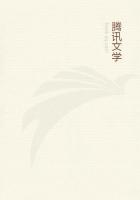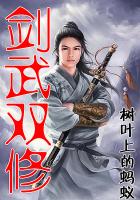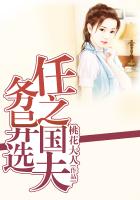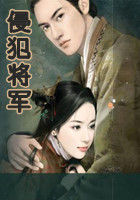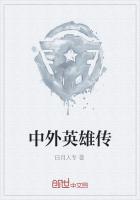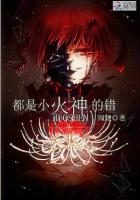Peculiar among the Testacea are the sea-urchins and the animals known as Tethya (Ascidians). The sea-urchins have five teeth, and in the centre of these the fleshy body which is common to all the animals we have been discussing. Immediately after this comes a gullet, and then the stomach, divided into a number of separate compartments, which look like so many distinct stomachs; for the cavities are separate and all contain abundant residual matter. They are all, however, connected with one and the same oesophagus, and they all end in one and the same excremental vent. There is nothing besides the stomach of a fleshy character, as has already been stated. All that can be seen are the so-called ova, of which there are several, contained each in a separate membrane, and certain black bodies which have no name, and which, beginning at the animal's mouth, are scattered round its body here and there promiscuously. These sea-urchins are not all of one species, but there are several different kinds, and in all of them the parts mentioned are to be found. It is not, however, in every kind that the so-called ova are edible. Neither do these attain to any size in any other species than that with which we are all familiar. A similar distinction may be made generally in the case of all Testacea. For there is a great difference in the edible qualities of the flesh of different kinds; and in some, moreover, the residual substance known as the mecon is good for food, while in others it is uneatable. This mecon in the turbinated genera is lodged in the spiral part of the shell, while in univalves, such as limpets, it occupies the fundus, and in bivalves is placed near the hinge, the so-called ovum lying on the right; while on the opposite side is the vent. The former is incorrectly termed ovum, for it merely corresponds to what in well-fed sanguineous animals is fat; and thus it is that it makes its appearance in Testacea at those seasons of the year when they are in good condition, namely, spring and autumn. For no Testacea can abide extremes of temperature, and they are therefore in evil plight in seasons of great cold or heat. This is clearly shown by what occurs in the case of the sea-urchins. For though the ova are to be found in these animals even directly they are born, yet they acquire a greater size than usual at the time of full moon; not, as some think, because sea-urchins eat more at that season, but because the nights are then warmer, owing to the moonlight. For these creatures are bloodless, and so are unable to stand cold and require warmth. Therefore it is that they are found in better condition in summer than at any other season; and this all over the world excepting in the Pyrrhean tidal strait.
There the sea-urchins flourish as well in winter as in summer. But the reason for this is that they have a greater abundance of food in the winter, because the fish desert the strait at that season.
The number of the ova is the same in all sea-urchins, and is an odd one. For there are five ova, just as there are also five teeth and five stomachs; and the explanation of this is to be found in the fact that the so-called ova are not really ova, but merely, as was said before, the result of the animal's well-fed condition. Oysters also have a so-called ovum, corresponding in character to that of the sea-urchins, but existing only on one side of their body. Now inasmuch as the sea-urchin is of a spherical form, and not merely a single disk like the oyster, and in virtue of its spherical shape is the same from whatever side it be examined, its ovum must necessarily be of a corresponding symmetry. For the spherical shape has not the asymmetry of the disk-shaped body of the oysters. For in all these animals the head is central, but in the sea-urchin the so-called ovum is above [and symmetrical, while in the oyster it is only one side]. Now the necessary symmetry would be observed were the ovum to form a continuous ring. But this may not be. For it would be in opposition to what prevails in the whole tribe of Testacea; for in all the ovum is discontinuous, and in all excepting the sea-urchins asymmetrical, being placed only on one side of the body. Owing then to this necessary discontinuity of the ovum, which belongs to the sea-urchin as a member of the class, and owing to the spherical shape of its body, which is its individual peculiarity, this animal cannot possibly have an even number of ova. For were they an even number, they would have to be arranged exactly opposite to each other, in pairs, so as to keep the necessary symmetry; one ovum of each pair being placed at one end, the other ovum at the other end of a transverse diameter. This again would violate the universal provision in Testacea. For both in the oysters and in the scallops we find the ovum only on one side of the circumference. The number then of the ova must be uneven, three for instance, or five. But if there were only three they would be much too far apart; while, if there were more than five, they would come to form a continuous mass. The former arrangement would be disadvantageous to the animal, the latter an impossibility. There can therefore be neither more nor less than five. For the same reason the stomach is divided into five parts, and there is a corresponding number of teeth. For seeing that the ova represent each of them a kind of body for the animal, their disposition must conform to that of the stomach, seeing that it is from this that they derive the material for their growth. Now if there were only one stomach, either the ova would be too far off from it, or it would be so big as to fill up the whole cavity, and the sea-urchin would have great difficulty in moving about and finding due nourishment for its repletion. As then there are five intervals between the five ova, so are there of necessity five divisions of the stomach, one for each interval. So also, and on like grounds, there are five teeth. For nature is thus enabled to allot to each stomachal compartment and ovum its separate and similar tooth.

